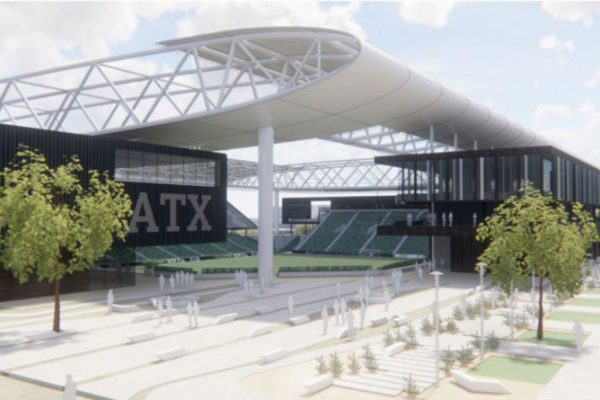As soccer fans prepare for the World Cup, few Americans seem to care. During the last World Cup in 2014, 86 percent of Americans said they knew little or nothing about the World Cup. But here in Austin, Precourt Sports Ventures, the owners of the Major League Soccer team Columbus Crew who are contemplating moving the team to Austin, commissioned a survey that found that 84 percent of Austinites were casual or avid soccer fans, and that 79 percent indicated some interest in buying season tickets.
The numbers justifying a team move to Austin are obviously suspect. But the least credible part of the proposal wasn’t the survey. It was the claim that this was a privately financed stadium that would benefit the region. There are two problems with this.
First, there are few issues with a greater consensus than the economic impact of sports stadiums. In a recent survey of economists at the Chicago Booth School of Business, only 2 percent of economists disagreed with the statement that sports stadiums are “likely to cost the relevant taxpayers more than any local economic benefits that are generated.” In a letter to the Austin City Council, economist Roger Noll made clear that sports stadiums have little economic impact in that they may attract some visitors to Austin, but these are for a few days a year and that much of the money spent at the stadium is simply money that would have been spent elsewhere in Austin.
Sports stadiums, even without any subsidies, are not an economic benefit to the city. We may want soccer here for the love of the game or the cultural cachet that comes with it, but simply put, sports stadiums are not economic engines of growth.
Second, the claim that the stadium will be 100 percent privately financed is both false and misleading because we don’t know how Precourt will finance the stadium. But we do know the proposal includes a reference to harnessing “new market tax credits.” This is a federal subsidy that rebates 39 percent of the private investment. The rest of the details are redacted, but there is clearly a mix of private money and government subsidies in this project.
More importantly, a “privately financed” stadium suggests there are no local subsidies. Nothing could be further from the truth. Precourt’s proposal isn’t to buy city land, build a stadium and pay taxes like the rest of us. They are proposing to “use” city land for up to 80 years, build a stadium, and then give it to the city. And pay rent to the city at $1 per year.
The donation of a stadium may sound like an odd act of generosity from an unlikely source, but it is a trick to hide the extent of subsidies that would be given to the company. By “using” the land and “giving away” the stadium, the team has full use of the complex for up to 80 years. And since they don’t technically own any land or the stadium, they do not pay property taxes.
If your eyes are glazing over from these details, let’s be more concrete. At least one other developer has put in a formal proposal to pay $22.5 million for the land that we would give away for 80 years.
Cities across the country have recently soured on subsidized stadiums, including St. Louis and Columbus, Ohio, where the Crew currently resides. Thus far, the only city analysis of this stadium is from an out-of-state contractor. The analysis only estimated the economic impact of the stadium, but it didn’t make a comparison between the city selling that land and the team paying their taxes. Other costs, such as the building of a new metro station or who pays the utilities for the stadium, are also still unclear.
We need to recognize that Austin has the bargaining advantage here. If we want a soccer team in Austin, the City Council must do it understanding this choice. The current proposal would generate few economic benefits to the city and could cost tens of millions in subsidies. This privately financed stadium comes at a huge public cost for Austin.
Nathan Jensen is a professor of government at The University of Texas at Austin and a member of the Scholar Strategy Network. He is the co-author of “Incentives to Pander: How Politicians Use Corporate Welfare for Political Gain.”
A version of this op-ed appeared in the Austin American Statesman.
To view more op-eds from Texas Perspectives, click here.
Like us on Facebook.




